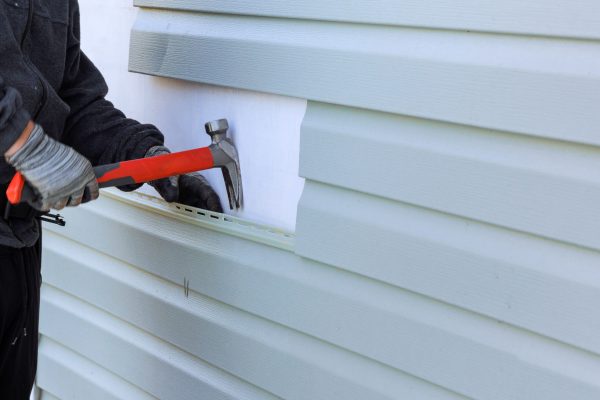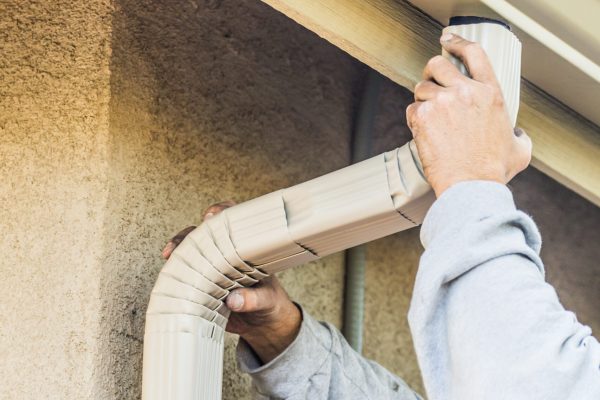1. Durability and Low Maintenance
One of the most significant benefits of vinyl siding is its durability. Unlike wood or other materials that can rot, warp, or be damaged by pests, vinyl siding is resistant to the elements. It stands up to rain, snow, wind, and extreme temperatures, making it ideal for various climates. Vinyl siding is also low-maintenance, requiring only occasional cleaning with soap and water. There’s no need to repaint, sand, or deal with termites, which saves homeowners both time and money in the long run.
2. Cost-Effective
When compared to other siding materials, vinyl siding is affordable and provides great value for the money. It’s a cost-effective solution, especially considering its long lifespan and minimal maintenance needs. In addition, vinyl siding helps reduce energy costs because it can improve the insulation of your home. The insulated vinyl siding options available today offer even more savings, as they help regulate the temperature inside your home.
3. Wide Variety of Styles and Colors
Vinyl siding offers a wide variety of styles, textures, and colors, making it easy to customize the exterior of your home. Whether you prefer a traditional look with horizontal panels, a more rustic appearance with shake siding, or something modern and sleek, there’s a vinyl siding option to suit your preferences. The range of color choices ensures you can achieve the exact aesthetic you're looking for, and the colors are designed to resist fading over time, keeping your home looking fresh for years.
4. Increased Curb Appeal and Home Value
Upgrading to vinyl siding can significantly boost your home’s curb appeal. With its clean, polished look, vinyl siding enhances the exterior of your property, making it more attractive to potential buyers. If you’re considering selling your home, investing in vinyl siding can increase its overall value. It’s a simple, effective way to give your home an instant facelift and make it stand out in your neighborhood.
5. Environmentally Friendly Options
Many vinyl siding manufacturers now offer eco-friendly options. Vinyl siding is made from recyclable materials, and many products are designed to be energy-efficient. This means that not only is it a good choice for your home’s durability and appearance, but it can also help reduce your environmental footprint. Additionally, with its long lifespan and low maintenance needs, vinyl siding reduces the need for frequent replacements, which helps minimize waste.

1. Adds Elegance and Sophistication
Custom trim work can give any room a sense of elegance and sophistication. Whether it’s crown molding in the living room, baseboards in the hallway, or window and door casings, the right trim instantly adds a polished, high-end feel to your home. These decorative details create clean lines and enhance the overall architectural style, giving your home a professionally designed appearance.
2. Customization to Fit Your Style
One of the greatest benefits of custom trim is the ability to personalize it to fit your home’s unique style. Whether you prefer a modern, minimalist design or a more classic, traditional look, custom trim can be crafted to complement the architecture and aesthetic of your home. With various wood species, finishes, and moldings to choose from, you can achieve a look that perfectly reflects your personality and taste.
3. Enhances Curb Appeal
While trim work is often associated with interior design, it can also play a major role in enhancing your home’s exterior. From detailed fascia around windows to shutters and decorative accents, custom exterior trim adds to the charm of your home’s curb appeal. Thoughtful trim details can make your house look more welcoming, well-maintained, and stylish from the street.
4. Conceals Imperfections and Provides Clean Lines
Trim serves a practical purpose as well. It can effectively conceal imperfections where walls meet ceilings or floors, creating clean lines and a seamless transition between different surfaces. Whether you’re trying to hide uneven edges, patch holes, or create a more refined look, trim provides an elegant way to finish off your space while also covering any construction or finishing imperfections.
5. Increases Home Value
Investing in custom trim is not just about aesthetics – it can also add value to your home. Well-crafted trim work is a sign of quality and craftsmanship, and prospective buyers often recognize it as an indicator of a well-maintained property. Whether you’re looking to sell your home or simply want to upgrade your space, custom trim can boost both the market value and appeal of your home, making it more desirable to future buyers.
6. Long-Term Durability
One of the advantages of custom trim is its longevity. Properly installed trim made from high-quality materials will last for years without warping, cracking, or fading. Whether you choose wood, MDF, or synthetic materials, custom trim is a durable solution that will continue to enhance your home for the long term. Plus, with the right maintenance, it can look beautiful for decades.

1. Clean Your Gutters Regularly
One of the simplest yet most important steps in gutter maintenance is regular cleaning. Over time, leaves, twigs, dirt, and other debris can accumulate in your gutters, blocking the flow of water. When this happens, water can overflow, potentially causing damage to your roof, siding, and foundation.
Tip: Clean your gutters at least twice a year (once in the spring and once in the fall). If you live in an area with a lot of trees, you may need to clean them more often.
Warning: Always use a sturdy ladder and wear gloves when cleaning your gutters to protect yourself from sharp objects or debris.
2. Check for Clogs and Blockages
Even if you clean your gutters regularly, clogs and blockages can still occur. Small debris, dirt, or even shingle granules from your roof can accumulate in the downspouts and create blockages that restrict water flow.
Tip: After cleaning your gutters, check the downspouts for clogs. If you notice water isn’t flowing freely, use a plumber's snake or a hose to clear the blockage.
Warning: If water is pooling in the gutters or overflowing, it's a clear sign that there’s a clog in the downspout or the gutter itself.
3. Inspect for Damage
Gutters are exposed to the elements year-round, which means they can easily become damaged. Cracks, dents, or rust spots can weaken the gutter system, making it less effective at directing water away from your home.
Tip: Regularly inspect your gutters for any visible damage, such as leaks, rust, holes, or loose sections. Addressing small problems early can prevent them from escalating into bigger issues.
Warning: If you find any damaged or sagging gutters, make sure to repair or replace them as soon as possible to avoid water damage.
4. Ensure Proper Water Flow and Alignment
If your gutters aren’t aligned correctly, water can pool in certain areas or flow improperly, leading to potential damage. Gutters should slope slightly toward the downspouts to ensure proper drainage.
Tip: Check the alignment of your gutters by standing on a ladder and visually inspecting them. They should slope slightly toward the downspouts (about ¼ inch for every 10 feet of gutter).
Warning: If your gutters are sagging or out of alignment, you may need to adjust or reattach them to ensure proper water flow.
5. Install Gutter Guards
If you find yourself constantly cleaning out your gutters, consider installing gutter guards. These protective covers prevent leaves and debris from entering your gutters while still allowing water to flow freely. Gutter guards can significantly reduce the amount of maintenance needed and help keep your gutters in better condition for longer.
Tip: Gutter guards are available in various styles and materials, including mesh, screen, and solid covers. Choose the type that works best for your home’s needs and budget.
Warning: While gutter guards reduce the need for cleaning, they don’t eliminate the need for regular inspections. Be sure to inspect your gutters occasionally to ensure they’re still functioning properly.

